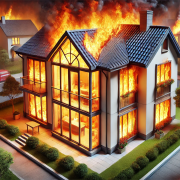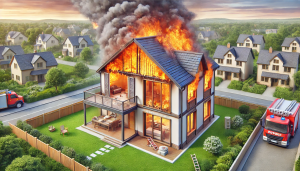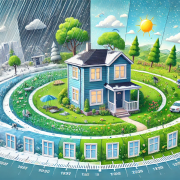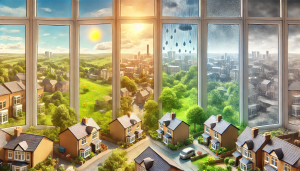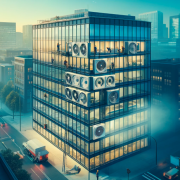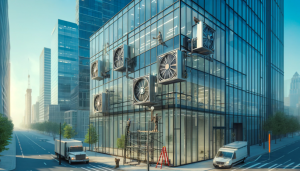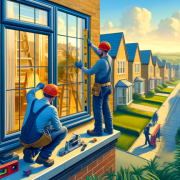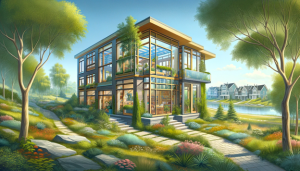Is UPVC Termite Proof?
UPVC (Unplasticized Polyvinyl Chloride) has gained immense popularity in the construction industry, particularly for windows and doors. With its reputation for durability and low maintenance, UPVC has become a preferred choice for many homeowners. One of the critical factors when selecting building materials is their resistance to pests, especially termites. Termites can cause severe damage to structures, leading to costly repairs and compromises in safety. In this blog post, we will delve into the question: Is UPVC termite proof?

Understanding Termites and Their Impact
What Are Termites?
Termites are small, social insects that thrive in colonies, often consisting of thousands to millions of individuals. They are notorious for their ability to consume cellulose-based materials, primarily wood. There are several types of termites, including subterranean, drywood, and dampwood termites, each with unique behaviours and habitats. These variations can influence the extent and type of damage they cause, making it essential to understand their characteristics when considering building materials.
Termites’ Impact on Building Materials
Termites can cause extensive damage to buildings by burrowing into wood and other cellulose-containing materials. This not only weakens the structural integrity of the building but also leads to substantial financial losses. Termite damage is often hidden until it becomes severe, making prevention and early detection crucial. Left unchecked, a termite infestation can result in the need for costly repairs and, in extreme cases, even the complete replacement of affected structures.
UPVC as a Building Material
What Is UPVC?
UPVC stands for Unplasticized Polyvinyl Chloride, a type of plastic widely used in construction. Unlike regular PVC, UPVC does not contain plasticizers, making it more rigid and durable. This rigidity and durability make UPVC an excellent choice for structures requiring high strength and minimal maintenance. UPVC is commonly used for window frames, doors, pipes, and other building materials due to its robustness and long-lasting nature.
Advantages of UPVC
UPVC offers several advantages that make it an attractive choice for construction. It is highly resistant to environmental factors such as moisture, heat, and UV radiation, contributing to its longevity. Unlike wood, UPVC does not require regular painting, sealing, or staining. It is easy to clean and maintain, saving homeowners time and money. Additionally, UPVC is recyclable and energy-efficient, making it a more environmentally friendly option compared to other materials.
Is UPVC Termite Proof?
Resistance of UPVC to Termites
One of the primary concerns for homeowners is whether UPVC can withstand termite attacks. Fortunately, UPVC is inherently resistant to termites. Termites feed on materials containing cellulose, which is absent in UPVC. This makes UPVC an unsuitable food source for termites, effectively protecting it from termite damage. Scientific studies and practical experiences have consistently shown that UPVC is not susceptible to termite infestations. As a result, homeowners can enjoy greater peace of mind knowing their UPVC installations will remain intact and unaffected by termite activity.
Comparison with Other Common Building Materials
When comparing UPVC to other materials like wood and metal, its termite resistance stands out. Wood, being rich in cellulose, is highly vulnerable to termite attacks. Even treated wood can eventually succumb to termites over time. Metal, while resistant to termites, is prone to rust and corrosion, requiring regular maintenance. UPVC combines the best of both worlds by being termite-proof and requiring minimal upkeep. Additionally, UPVC does not suffer from the structural limitations of metal and offers superior thermal and acoustic insulation, making it a more versatile and practical choice for various applications.
Practical Experiences and Case Studies
Real-World Examples of UPVC Installations
Homeowners and builders alike have shared numerous success stories regarding UPVC installations. In regions prone to termite infestations, such as tropical and subtropical areas, UPVC has demonstrated remarkable resilience. For instance, several residential projects in termite-heavy regions of Australia have reported zero termite-related issues years after UPVC installation. These real-world examples reinforce the theoretical benefits of UPVC and provide practical evidence of its effectiveness.
Testimonials from Homeowners and Builders
Homeowners who have switched to UPVC windows and doors often highlight the peace of mind it brings. Testimonials frequently mention the absence of termite worries and the reduced maintenance compared to traditional wooden frames. Builders also praise UPVC for its ease of installation and long-term reliability. These firsthand accounts add a layer of credibility to the claim that UPVC is a superior choice for termite resistance. Furthermore, the durability and resilience of UPVC in various environmental conditions strengthen its reputation as a reliable and cost-effective building material.
Additional Benefits of Using UPVC
Weather Resistance and Insulation
Beyond its termite-resistant properties, UPVC is celebrated for its exceptional weather resistance. Unlike wood, UPVC does not warp, crack, or swell when exposed to moisture. This makes it an excellent choice for windows and doors, which are constantly subjected to varying weather conditions. UPVC also provides excellent insulation, helping to maintain indoor temperatures and reduce energy costs. The material’s thermal efficiency makes it a practical option for both hot and cold climates.
Aesthetic and Customisation Options
UPVC is not only functional but also versatile in terms of design. It comes in a wide range of colours, finishes, and styles, allowing homeowners to customise their installations to match their aesthetic preferences. Whether aiming for a traditional look or a modern finish, UPVC can be tailored to suit various architectural styles. Additionally, UPVC retains its appearance over time, resisting fading and discolouration even with prolonged exposure to sunlight. This longevity in aesthetics ensures that homes maintain their curb appeal without the need for frequent updates or replacements.
In summary, UPVC proves to be a highly effective material in combating termite damage. Its composition and properties make it an ideal choice for those seeking durable and low-maintenance building solutions. UPVC not only offers resistance to termites but also provides additional benefits such as weather resistance, excellent insulation, and a variety of customisation options. For homeowners and builders looking to protect their investments and enhance the longevity of their structures, UPVC stands out as a superior material choice. Its long-term cost-effectiveness and minimal environmental impact further solidify its position as a top contender in modern construction materials.


